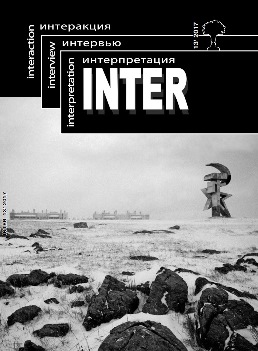Переезды внутри Москвы: как тип домохозяйства и стиль жизни предопределяет выбор места жительства
Для цитирования
Балакирева М. С., Горяйнова А. Р., Полухина Е. В. Переезды внутри Москвы: как тип домохозяйства и стиль жизни предопределяет выбор места жительства // Интеракция. Интервью. Интерпретация. 2017. Том 9. № 13. С. 82-95.
Аннотация
Данная статья основана на материалах 3‑х последовательных этапов работы с данными (qual->quant->qual), посвященных анализу внутригородских переездов жителей Москвы. На первом этапе (qual) на материалах биографических интервью советских поколений проанализированы жилищные траектории, в результате построена типология внутригородских переездов, актуальная для Москвы ХХ в.3, и показано, что в советское время траектории внутригородских переездов были преимущественно предопределены внешними обстоятельствами и решениями «сверху» (подселение, «дали квартиру»).Разработанная на первом этапе типология переездов легла в основу 2‑й количественной части — анкеты, измеряющей внутригородские переезды современных горожан. В результате онлайн-опроса с участием 153 респондентов (quant) и последующего кластерного анализа были выделены 6 групп «переезжающих» москвичей. Показано, что современные переезды связаны, в первую очередь, с индивидуализированным желанием горожанина улучшить жилищные условия, выбрать жилое пространство, соответствующее его типу семьи и образу жизни.На 3‑м этапе из участников опроса было выбрано 16 информантов 18–30 лет. С ними были проведены полуформализованные биографические интервью (qual), детализирующие тему переезда и значения современного жилья. Показано, что для молодежи жилище, с одной стороны, сохраняет функцию традиционного «дома» (сон, хранение вещей и др.), а с другой стороны, выполняет роль и «рабочей зоны» (работа на компьютере, творчество), и «публичной площадки» для реализации коллективных действий.
Ключевые слова:
Внутригородские переезды, жилищная мобильность, жилищные траектории, Москва, ментальная карта домашнего пространства, молодежь
Литература
Архив института социологии АН СССР // Единый архив экономических и социологических данных. URL: http://sophist.hse.ru (дата обращения: 08.07.2017).
Веселкова Н. В. Ментальные карты города: вопросы методологии и практика использования // Социология: методология, методы и математическое моделирование. 2010. № 31. С. 5–29.
Глазков К. Экскурсия по городу: ментальные карты как инструмент работы с городским опытом // Мониторинг общественного мнения: экономические и социальные перемены. № 5 (117). 2013. С. 136–151.
Нартова-Бочавер С. К. Дом как жизненная среда человека: психологическое исследование. М.: Памятники исторической мысли, 2016.
Полухина Е. В., Горяйнова А. Р. Жилищные траектории московских семей в XX веке как объект вторичного анализа биографических интервью // ИНТЕРакция. ИНТЕРвью. ИНТЕРпретация. 2015. № 10. С. 47–59.
Полухина Е. В. Жилищная мобильность: направления социологического анализа // Журнал исследований социальной политики. 2017. [В печати].
Семенова В. В. Современные концепции и эмпирические подходы к понятию «поколение» в социологии // Отцы и дети: поколенческий анализ современной России / Под ред. Ю. А. Левады, Т. М. Шанина. М.: Новое Литературное обозрение, 2005. С. 80–107.
Социальная мобильность в России: поколенческий аспект: колл. монография / А. В. Ваньке и др.; отв. ред. В. В. Семенова, М. Ф. Черныш, А. В. Ваньке; Ин-т социологии РАН. М.: Ин-т социо-
логии РАН, 2017.
Стрельникова А. В. Перемещения в пространственных координатах: больше, чем географическая мобильность // ИНТЕРакция. ИНТЕРвью. ИНТЕРпретация. 2014. № 8. С. 30–36.
Coulter R., Ham M. Following People Through Time: An Analysis of Individual Residential Mobility Biographies // Housing Studies. 2013. № 28. P. 1037–1055.
Kleit R. G., Kang S., Scally C. P. Why Do Housing Mobility Programs Fail in Moving Households to Better Neighborhoods? //Housing Policy Debate. 2016. № . 1 (26). P. 188–209.
Morgan D. Integrating Qualitative and Quantitative Methods: A Pragmatic Approach. Thousand Oaks, CA: SAGE Publications, 2014.
Schachter J. Why people move: Exploring the March 2000 current population survey // US Department of Commerce. Economics and Statistics Administration. US Census Bureau. 2001. № . 204. P. 23–204.
Веселкова Н. В. Ментальные карты города: вопросы методологии и практика использования // Социология: методология, методы и математическое моделирование. 2010. № 31. С. 5–29.
Глазков К. Экскурсия по городу: ментальные карты как инструмент работы с городским опытом // Мониторинг общественного мнения: экономические и социальные перемены. № 5 (117). 2013. С. 136–151.
Нартова-Бочавер С. К. Дом как жизненная среда человека: психологическое исследование. М.: Памятники исторической мысли, 2016.
Полухина Е. В., Горяйнова А. Р. Жилищные траектории московских семей в XX веке как объект вторичного анализа биографических интервью // ИНТЕРакция. ИНТЕРвью. ИНТЕРпретация. 2015. № 10. С. 47–59.
Полухина Е. В. Жилищная мобильность: направления социологического анализа // Журнал исследований социальной политики. 2017. [В печати].
Семенова В. В. Современные концепции и эмпирические подходы к понятию «поколение» в социологии // Отцы и дети: поколенческий анализ современной России / Под ред. Ю. А. Левады, Т. М. Шанина. М.: Новое Литературное обозрение, 2005. С. 80–107.
Социальная мобильность в России: поколенческий аспект: колл. монография / А. В. Ваньке и др.; отв. ред. В. В. Семенова, М. Ф. Черныш, А. В. Ваньке; Ин-т социологии РАН. М.: Ин-т социо-
логии РАН, 2017.
Стрельникова А. В. Перемещения в пространственных координатах: больше, чем географическая мобильность // ИНТЕРакция. ИНТЕРвью. ИНТЕРпретация. 2014. № 8. С. 30–36.
Coulter R., Ham M. Following People Through Time: An Analysis of Individual Residential Mobility Biographies // Housing Studies. 2013. № 28. P. 1037–1055.
Kleit R. G., Kang S., Scally C. P. Why Do Housing Mobility Programs Fail in Moving Households to Better Neighborhoods? //Housing Policy Debate. 2016. № . 1 (26). P. 188–209.
Morgan D. Integrating Qualitative and Quantitative Methods: A Pragmatic Approach. Thousand Oaks, CA: SAGE Publications, 2014.
Schachter J. Why people move: Exploring the March 2000 current population survey // US Department of Commerce. Economics and Statistics Administration. US Census Bureau. 2001. № . 204. P. 23–204.
Форматы цитирования
Другие форматы цитирования:
APA
Балакирева, М. С., Горяйнова, А. Р., & Полухина, Е. В. (2017). Переезды внутри Москвы: как тип домохозяйства и стиль жизни предопределяет выбор места жительства. Интеракция. Интервью. Интерпретация, 9(13), 82-95. извлечено от https://www.inter-fnisc.ru/index.php/inter/article/view/5379
Выпуск
Раздел
Полевые исследования











